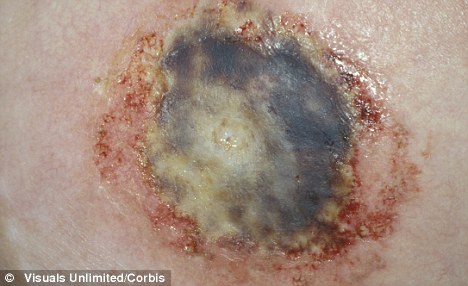Topic 6: Weapons of the Invaders
Understanding
Disease: The Great BattleThe Battleground - Your Body
Invading forces: Pathogens
Strategies for _ENTRY, avoiding capture, gaining control, using resources_____________________________
Defenders of the castle: Your Body
Outer perimeter defenses -level one
Within the wall defenses -level 2
Final defenses (throughout) -level 3
How the pathogens attack your body:
Correct entry:portal of entry, doseMust come in at the right ___________________, and the correct _________ must be present.
(PRINT OUT and complete comparison chart in review materials)
Physical
weapons:
Ligands (Fig. 14.5)fimbrae
capsules (Fig. 14.5 and 14.6)
*neutralize drugs
* avoid phagocytosis
* delay immune response to pathogen
Chemical weapons:
Enzymes of
Pathogens: alter substrate in host tissue (Fig. 14.9a) (Affect location of pathogen)
invasins- _Flagella_, along with invasin enzymes,
allow___penetrate into tissue__
Ex.___Borrelia in Lyme disease________________coagulase – forms clots
(helps pathogen form ___localized__________________
infections)
(strepto)kinase – dissolves clots
(helps pathogen become_____septicemia (spread into
bloodstream_________________)
hyaluronidase-dissolves cell cement, “spread factor”
collagenase- breaks down collagen
(work together to allow _____spread of organism
through tissue_______________________________)
**** draw picture*** hyaluronidase dissolvs cell cement between
cells, collagenas breaks down collagen between layers of cells and it allow
spread of organisms through tissue of organism ***
(Affect blood cells)
leucocidin – kills
white blood cells
(contributes to formation of____pus_____________)
M-protein – prevents White Blood Cells (WBC)
phagocytosis
(prevents: _____WBC from eating bacteria_____________________
)
Example: streptococcus pneumoniae……
*****strep. Pyogenes virulence factors Box p. 545
(pus forming strep throat)*****
hemolysins – rupture red blood cells
(two benefits)
1-
Reduces oxygen and increase carbon dioxide for
microaerophiles
2-
Releases protein, iron for nutrients
Pathogens use you as food source:
digestive enzymes - proteases, lipases,
amylases, etc.***** necrotoziers fasciitis (eat through your tissues… they can spread 2 mm per hour under the skin**** if she had waited to 3 hours she would have died::: picture of a girl drug user Friday to Sunday morning….

Catch it early before it spreads:


Chemical weapons:
* Toxins: - Affect functionality of host tissue
* two kinds: endotoxins and exotoxins
Toxins of
Pathogens: (Fig. 14.9 b, Table 14.8)
Exotoxins:
Molecule type: proteinssecreted from __live cells_______________
Gram reaction of producers______both + and -_________
Effect felt ____specific cells/ tissues_____________
Specific __immune response (antitoxins)___________________ produced by immune system in response to toxins
·
Heat denatured toxin can be made into a toxoid….
toxoid production possible to
make ___as a vaccine___________
Exotoxin
types:
Cytotoxins: directly kills cells (by affecting cell membrane and making it
burst and cause large lesions)Ex. Anthrax

Enterotoxins: affect digestive tract (usually intestines)
-
Fluid loss from blood into intestines and/or
peristalsis
o
Diarrhea, cramping, nausea
o
Ex. Cholera
organism fig 21.21
o
Example: staph. Aureus, E. coli O157:H7, Samonella
Neurotoxins: affect nervous system
(fig 19.14)
1.
botulism (__flaccid______ paralysis)
2.
tetanus (___rigid_______ paralysis)
Mechanism of action of botulism toxin (Fig. 19.14)
toxin binds to ___nerve ending_________________
prevents ______release of neurotransmitter (acetylcholine)____________________
no muscle ____contraction_______________ occurs
__FLACCID________ paralysis
(often misdiagnosis as a stroke)
Infant botulism:
FDA Medicinal uses of “Botox”:
***most potent toxin known to men*** Migranes…. (in
temple area)
***uncontrollable muscle contractions
***excessive sweating
Can wear off in a month or 2 months….
---what does the bacteria gain from
this toxin? Hypothesis…. Spores, anerobic, waste by product of another reaction?
Mechanism of action of tetanus toxin (Fig. 19.16, 19.17)
toxin binds to ____nerve ending________________
prevents __inhibitory neuron neurotransmitter release______
no muscle _____relaxation_________ occurs
___rigid___________ paralysis
Endotoxins:
(Lipid A) Figure 14.9b, Table 14.7
Molecule type: LipidFound in cell within __Lipid A of LPS layer of cell wall________
Gram reaction of producers: Gr – cells ONLY
released from cell: only when the cell dies
effect: systemic
*endotoxin shock: fever, inflammation, Blood pressure drop, shock, blood congulation, etc
- lipids- do NOT trigger specific immune response = no antitoxins made in body
Do NOT: trigger specific immune responses
So NOT usable to make ____vaccines________________
Intro to Defense
section:
·
Level one: on the surfaces
o
Non-specific, non-solicited response (example. repelled
by surface defense, always there, example the fact that your skin is salty)
·
Level 2: beneath the surface
o
Non-specific, semi solicited (example: white
blood cells: always there but will respond to the need to localized invasions,
inflammatory response)
·
Level 3: Systemic response
o
Specific, solicited (targeted to very specific
pathogens, never kicks in until it get on and through skin)
What defenses contribute to each leavel of protection?
Pictures…
Level 1 skin defenses Fig 15. Table 15.1
Weapon
|
Type (Chemical or Physical)
|
Specifically
causes (molecular basis)
|
End
result (symptoms or benefit)
|
ligand
|
P-molecule
|
||
Fimbrae
|
P-hairlike
|
||
Capsule/glycocalyx
|
P-slimy
|
||
Invasins
|
C-Enzyme
|
||
Coagulase
|
C-Enzyme
|
||
Kinase
|
C-Enzyme
|
||
Hyaluronidase
|
C-Enzyme
|
||
Collagenase
|
C-Enzyme
|
||
Leucocidin
|
C-Enzyme
|
||
M protein
|
C-Enzyme
|
||
Hemolysin
|
C-Enzyme
|
||
Digestive enzymes
|
C-Enzyme
|
||
Neurotoxin
|
C-Exotoxin/protein
|
||
Enterotoxin
|
C-Exotoxin/protein
|
||
Cytotoxin
|
C-Exotoxin/protein
|
||
Endotoxin
|
C-lipid
|
No comments:
Post a Comment